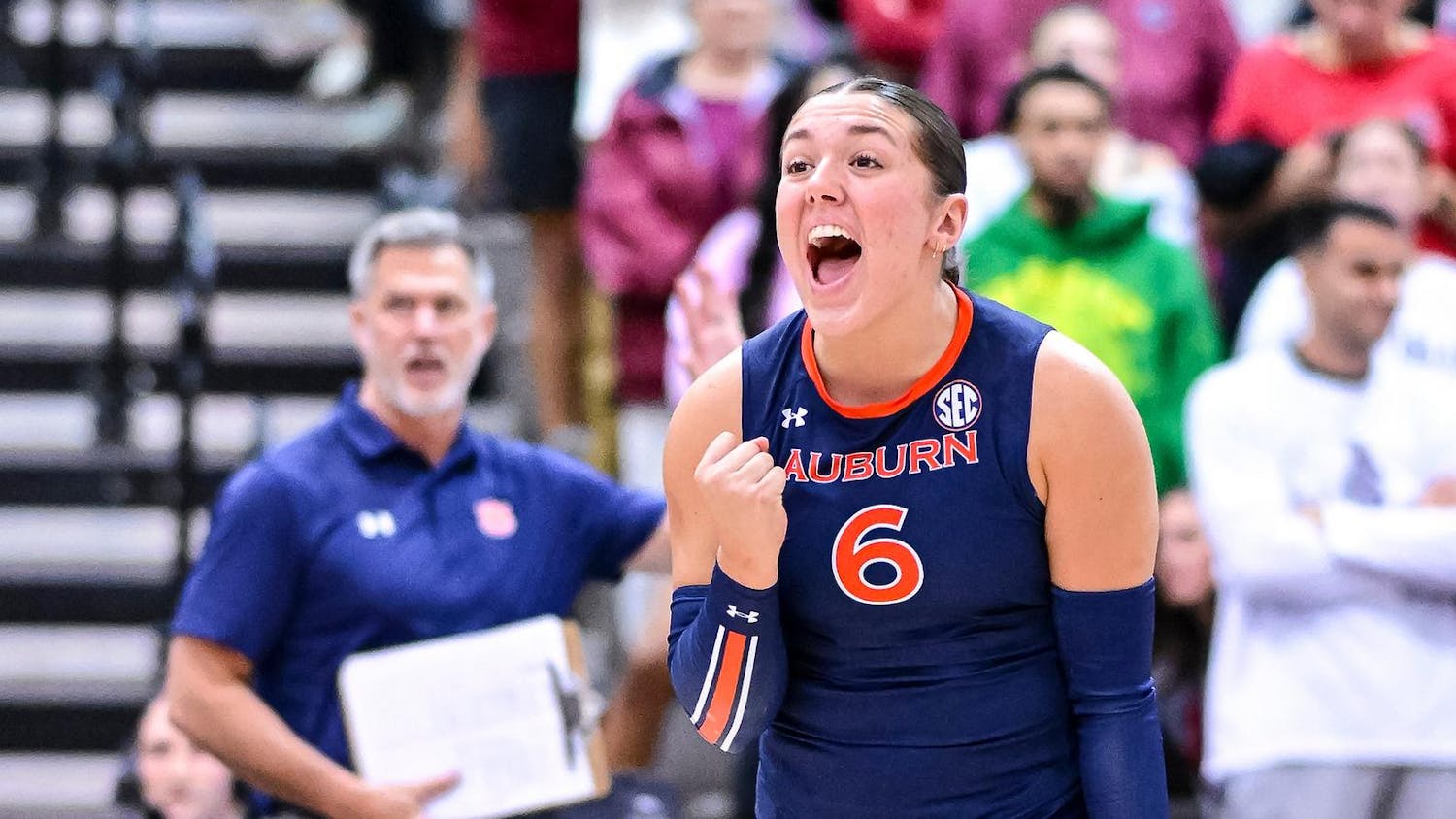The scorched earth around the new Toomer’s Oaks is coming back to life after a fire killed one of the trees last fall. Despite the healthy progress, the University has asked that Auburn fans refrain from rolling the two Auburn Oaks and several descendant trees this season.
University Planner Ben Burmeister said the team is very confident in the tree’s chances of being permanent, reliable installments.
To ensure the tree’s viability, Burmeister said, rolling will be postponed for an unknown amount of time.
After the fire overcame the tree on Sept. 25, 2016, members of the Auburn community and fans flooded the trees, stomping the flames out as swiftly as they could.
Jochen Wiest, a native to Germany, was accused of setting the tree ablaze and was released on bond and let go from his local job. He has since pleaded guilty to charges of first-degree criminal mischief.
The new tree was installed in February and if the public were to roll the newly placed Toomer’s Oaks and the descendant trees that line the sidewalk along Samford Lawn, the damage could result in stunted growth, Burmeister said.
The trunks of the trees that took the spots were 10-12 inches in width and came from a “well-respected” nursery in Florida. Burmeister said Florida provided a better variety of live Oaks than Georgia or Alabama.
Keeping the tradition and bringing two of the same kind of trees that were present before the poisoning was very important to the team, Burmeister said.
University arborist Alex Hedgepath said there has been a significant amount of leaf-drop, specifically on the College Street Oak because of too much rain and an inadequate amount of drainage time.
“We have had a higher than normal rain fall this season and that kind of takes away some of the control we have,” Hedgepath said.
The team has installed drip irrigation around both trees for when there is not enough water to sustain desirable health. Most of the time spent with the trees now is water management.
Hedgepath said there are moisture sensors in the soil that monitor the drainage.
Hedgepath said they are monitoring the nutrient levels and supplementing where certain nutrients are lacking. The management is done via Hedgepath’s computer.
By looking at a spreadsheet of data calculated by the sensors in the soil, Hedgepath knows which nutrient is needed and whether a slight water drip is necessary on a dry day.
Aside from the unexpected rain, root development has exceeded expectations, Hedgepath said. He said the roots that are forming at the moment are fibrous and can be damaged easily by people stepping around the bed of the tree.

“When I say fibrous, I mean they are millimeters in diameter — they’re tiny,” Hedgepath said. “There are lots of them, and if you impact those in the slightest you could break them.”
The trees are smaller than the original tree transplants that were installed after Harvey Updyke’s poisoning but are still very large live Oaks to be transported. Hedgepath said trees can go through what is called, “transplant shock,” and keeping external forces away from growth areas is wise.
“The trees are going to go through years of establishment,” Hedgepath said. “It’s gonna take a lot of time to get these trees comfortable and established.”
The decision to stay clear of the Toomer’s Oaks this season was not completely based upon the condition of the trees, but rather the future of their health.
Hedgepath said if rolling were to occur the chances of fans jumping the fence, stepping on the fibrous roots and possibly damaging the growth is too prominent of a risk.
The main Auburn Oaks will be surrounded with fencing and signage to inform fans of the new rolling procedures.
The 10 descendant trees, which were planted from acorns from the original 130-year-old oaks, will have signage as well.
“If those little six inch trees are still getting comfortable you can imagine the big oaks are going to need some time to get comfortable,” Hedgepath said.
In the spring, Hedgepath and his team performed a vertical mulching operation to reverse urban soil packing.
Using an Air Spade, the team pushed air into spaces around the roots to form pockets where water and nutrients can gather. Hedgepath said they responded very well to the treatment.
The trees that have been selected for rolling are structurally sound and will be ready for Saturday — if the Auburn Tigers are ready for them.
“I am not saying we would encourage abuse to [the rolling trees], but we believe the trees are tough enough to withstand rollings one quarter of the year,” Hedgepath said.
Hedgepath said rolling depends on a lot of different factors that are unpredictable at the moment, which is why the team is unable to say when rolling of the Toomer’s Oaks will resume.
Do you like this story? The Plainsman doesn't accept money from tuition or student fees, and we don't charge a subscription fee. But you can donate to support The Plainsman.




